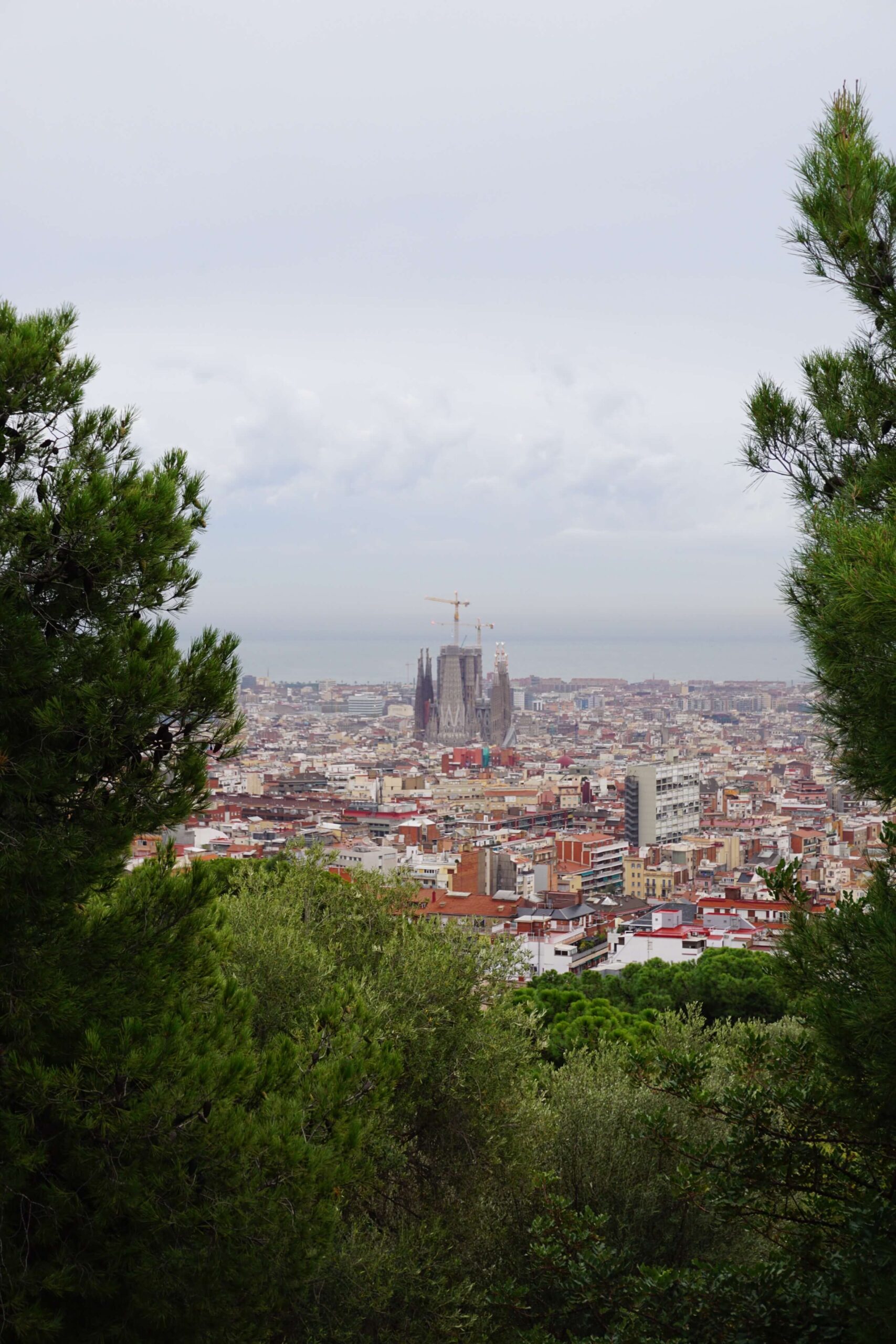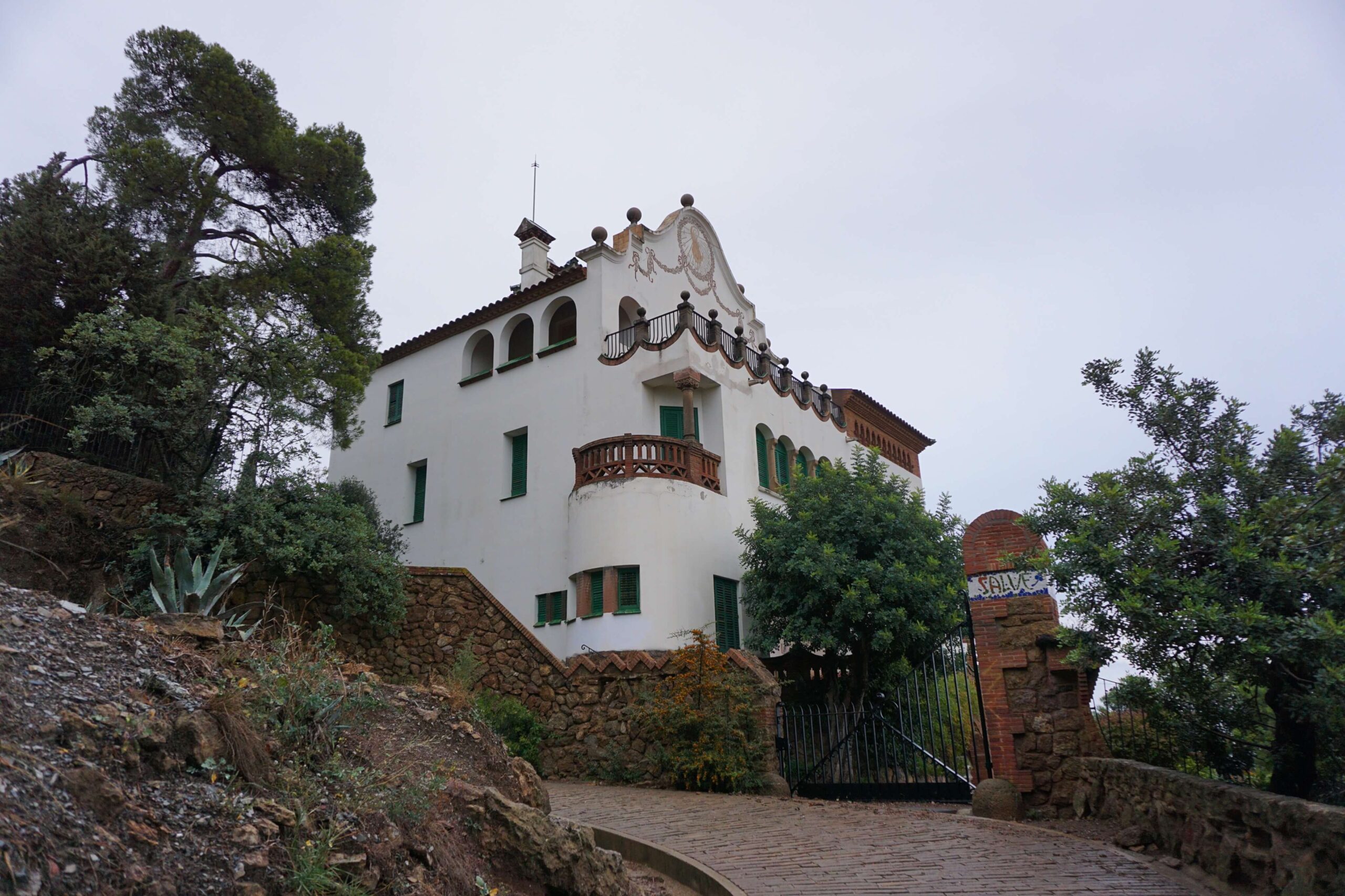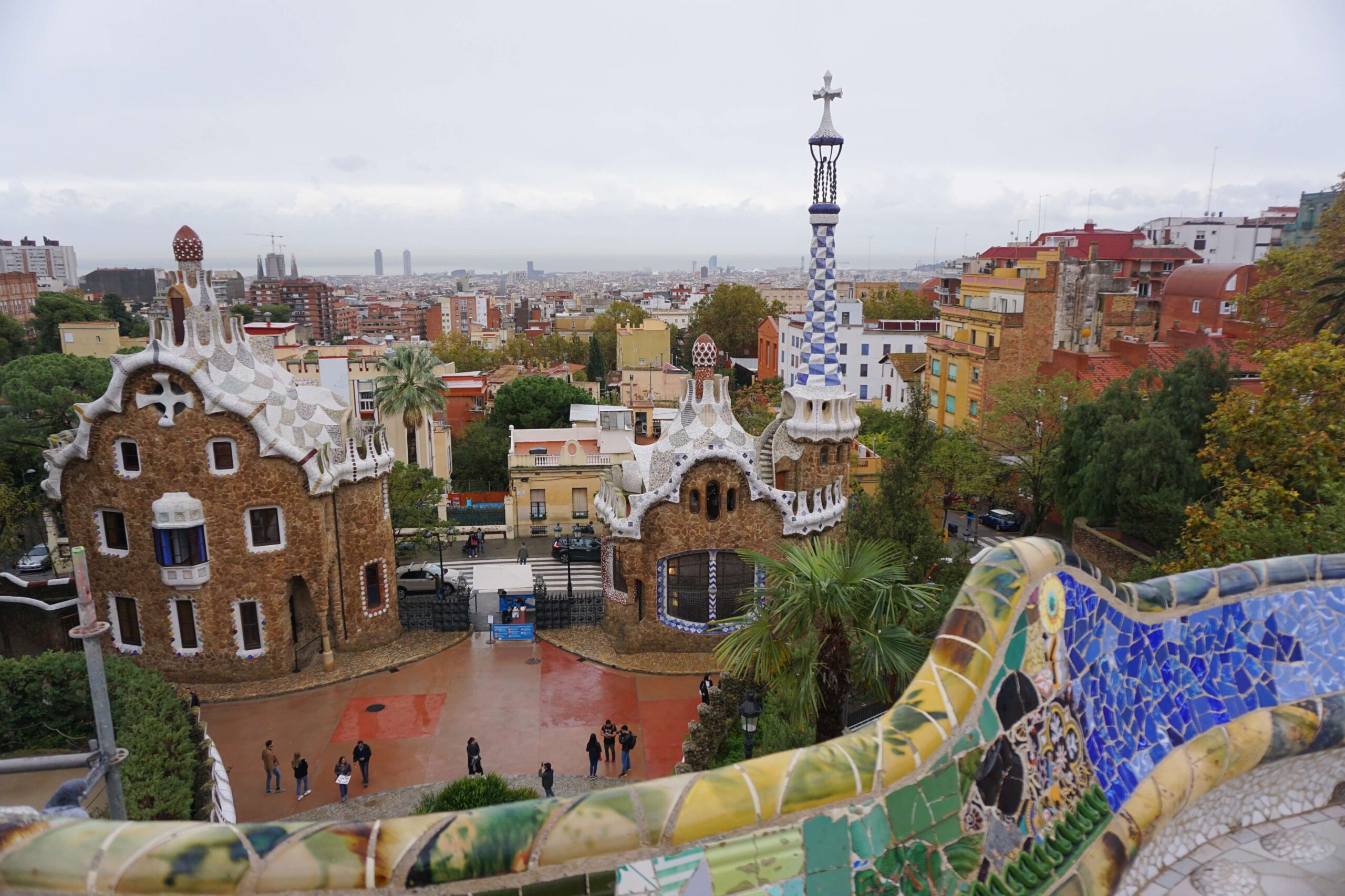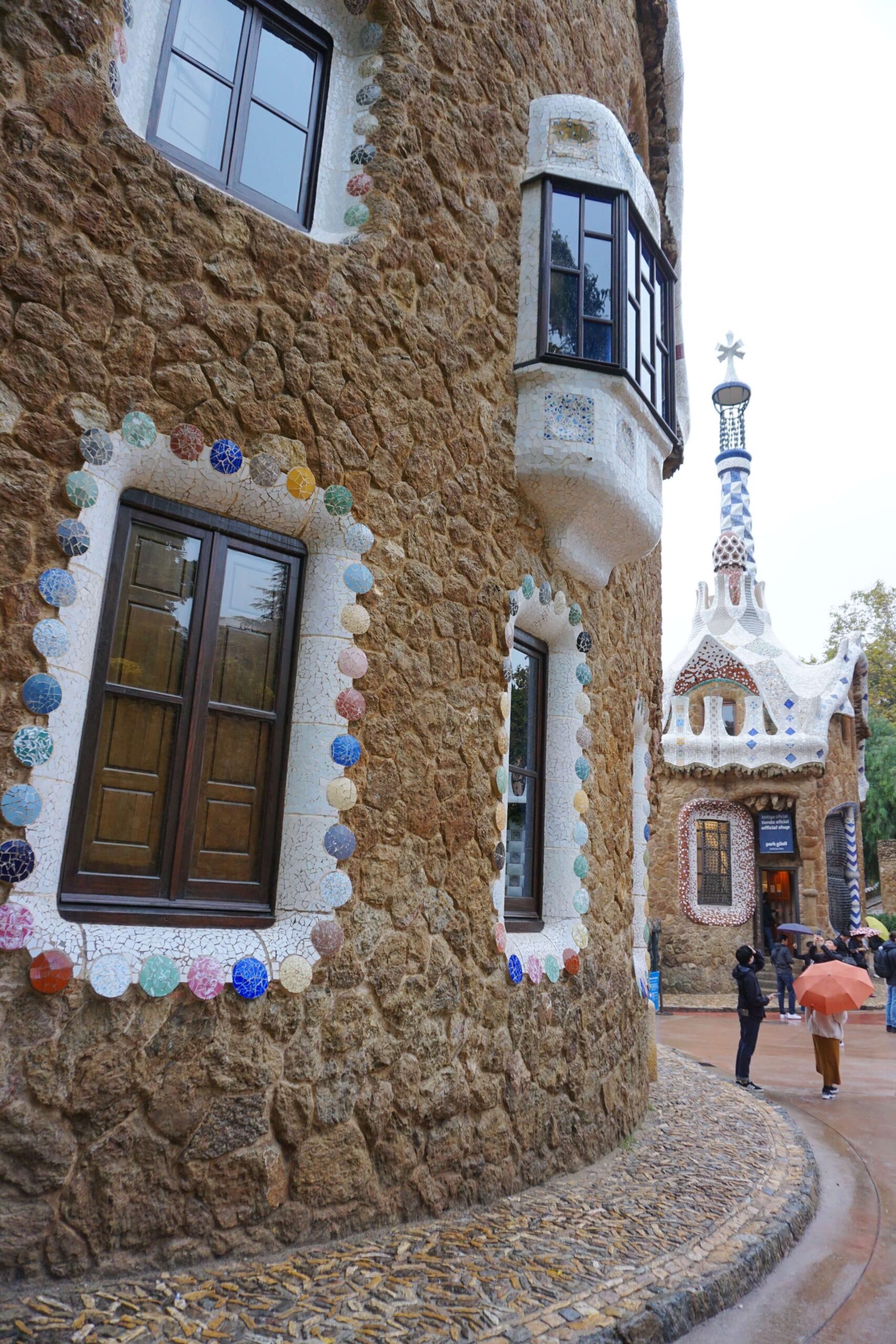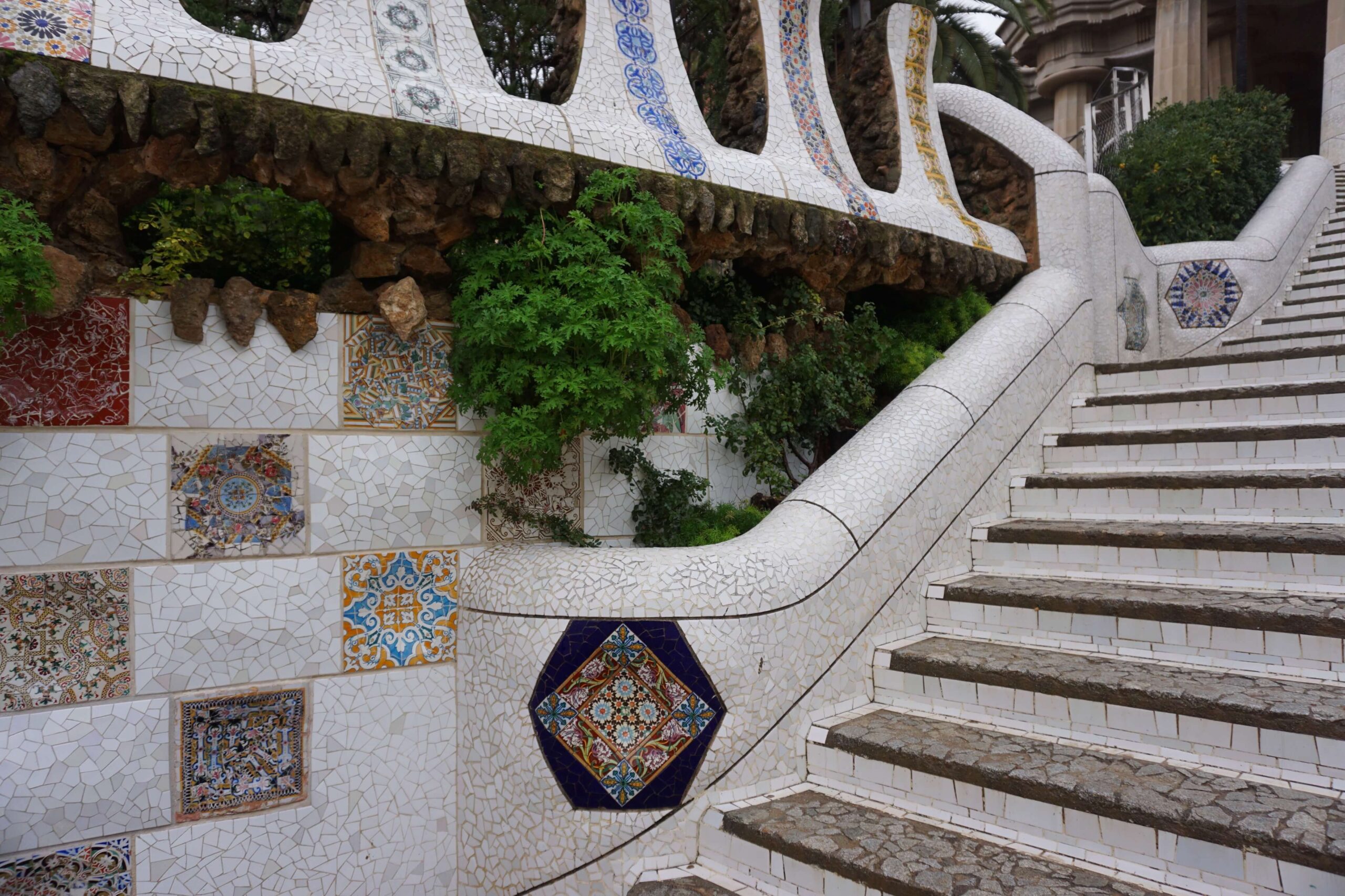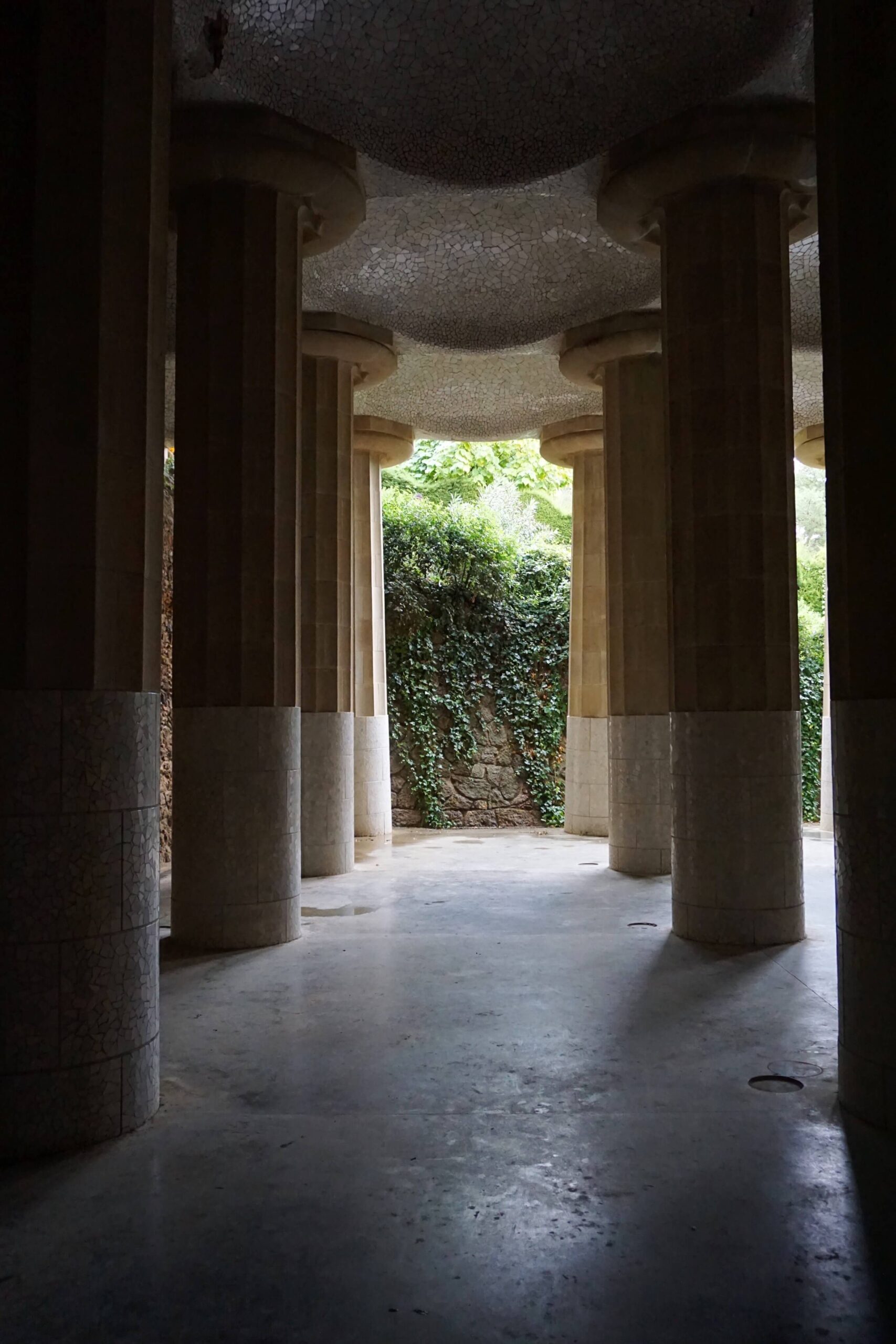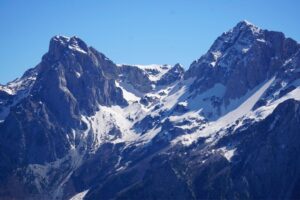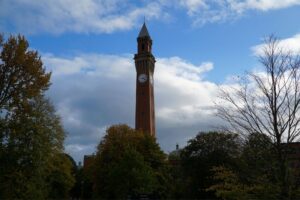The highest part of the park’s grounds, this location is known as Turó de les Tres Creus, which literally translates as Hill of the Three Crosses.
The original plan was to construct a single nave chapel at the summit. However, this never happened, with only a Calvary bearing three crosses built. Unfortunately, the original was destroyed during the Spanish Civil War, so the current one is a replica.
Whether or not many people down in the Monumental Zone knew about this viewpoint, I don’t know, but company at the summit of Turó des les Tres Creus was few and far between.
I won’t lie, I was thankful for it. I had some exquisite views of the city all to myself. I didn’t realise how vast the plain of Barcelona is, with dense urban settlement stretching along the coast as far as the eye can see. It really was extremely impressive, and I was able to pick out key landmarks amongst this sprawling metropolis; at one point there is a gap through the tree’s enabling an excellent view of the Sagrada Familia, standing tall and majestic amongst the city’s skyline.
